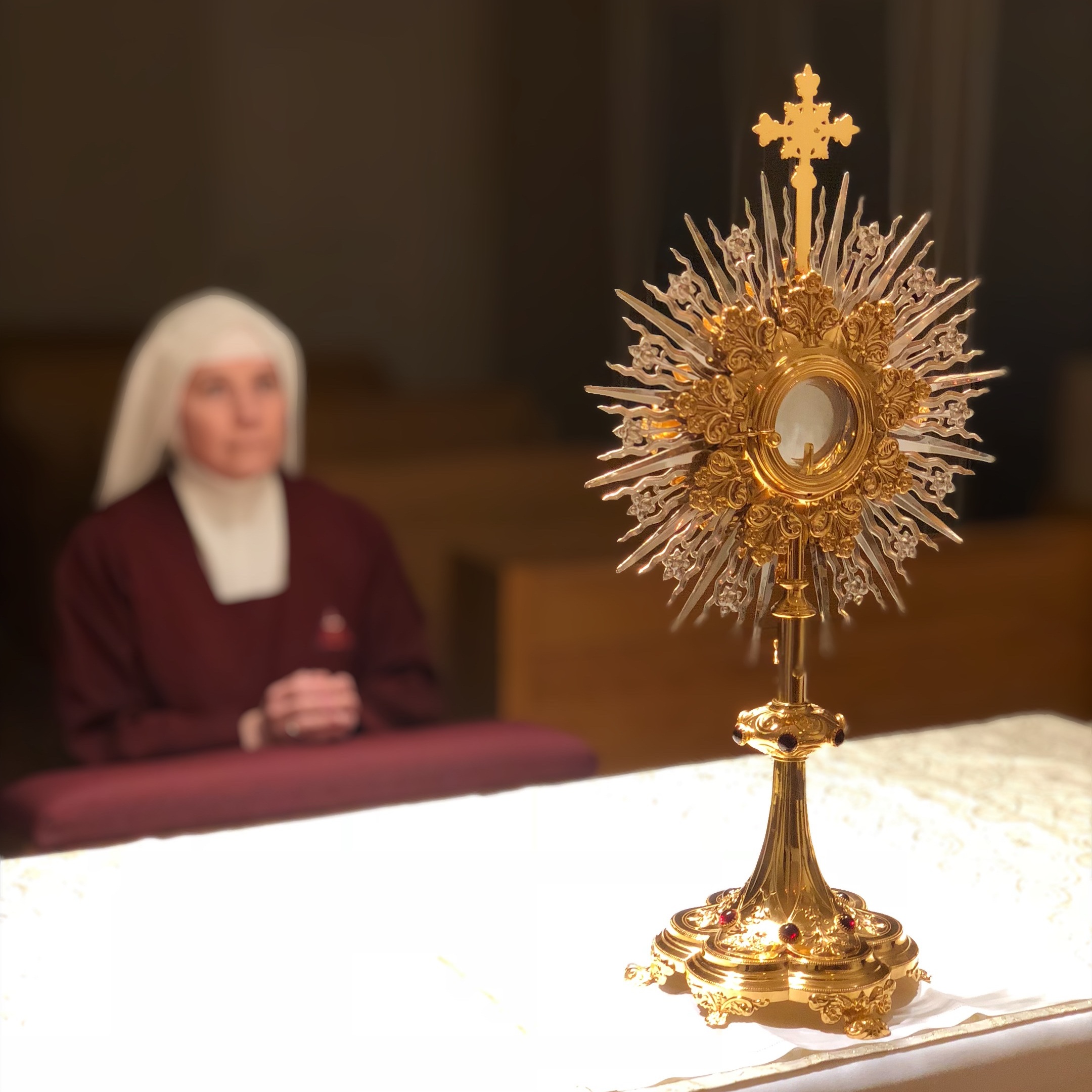Cloistered Nuns that Have Eucharistic Adoration

A Handmaid of the Precious Blood in nocturnal Adoration
In our world of noise and distractions, Eucharistic Adoration has become one of the most attractive ways for Catholics to encounter Christ. Though the popularity of Exposition of the Blessed Sacrament first experienced a surge in the 17th century, St. John Paul II is responsible for its revival and expansion in our own day. Thanks to the trend he set in motion, Eucharistic adoration chapels continue to pop up in parish churches, college campuses, seminaries, and convents. Conferences and retreats for young people almost always include a time of Eucharistic Adoration, and most young women discerning a vocation will spend considerable time in front of a monstrance, face to face with the Lord of the Universe, receiving his gaze of love.
Given this familiarity with Adoration, many young women discerning cloistered life are interested in monasteries that practice Exposition of the Blessed Sacrament. In this post, I want to highlight some of the communities with Adoration and explain the role it plays in their way of life.
Some communities actually have a charism of Adoration, which means that the Holy Spirit’s original inspiration for their community included a special devotion to this practice. Some of the communities that have Adoration as part of their charism would be:
There are a number of other communities who do not specifically consider Adoration to be part of their charism, but for whom Adoration has always been an important aspect of their spiritual life. Some of these communities would be:
Most Poor Clare monasteries have always practiced Eucharistic Adoration, since St. Francis and St. Clare of Assisi are credited with popularizing it in the Middle Ages.
Most Dominican monasteries also have Eucharistic Adoration, since the Eucharistic devotion of St. Thomas Aquinas forms a strong part of their heritage.
Older monastic traditions such as Benedictines and Carmelites pre-date the popular surge in Exposition of the Blessed Sacrament. Naturally, all monasteries have a strong devotion and love for the the Real Presence of Christ in the Eucharist, but that devotion is not necessarily expressed in prayer before a monstrance. These communities may carry out their daily meditation in front of the closed tabernacle, or may even have a tradition of meditating in the solitude of their cells. But in the last few hundred years, many monasteries in these traditions have introduced Exposition of the Blessed Sacrament. Here are some examples of older monastic traditions that have incorporated Adoration into their spiritual life:
I’m sure there are other monasteries that have Adoration that I haven’t listed here; if you know of one I’ve missed, feel free to post it in the comments! Below are links to communities who list Adoration as part of their profile in our directory.





























